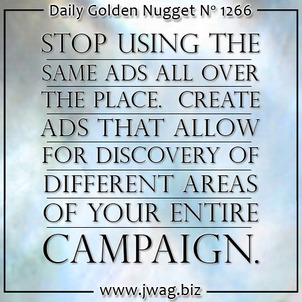
I was at a social media marketing meeting in New York City last month when someone asked if they should be posting the same photos and status update to every social network.
That was a good question, and there's no real straightforward answer. In reality, it depends if you have the same audience following you on all the social networks. If the same audience follows you on all networks, then they will get very bored very fast to see the same image and message everywhere.
On the other hand, because each social network has its own set of users and culture you might not have the same followers all around, in which case you could post the same message and photos across them all.
It's very tempting to post the same message everywhere when you have limited resources. Consider though that, even if it's a different audience, every social network has its own methods and users have a different set of expectations.
While Facebook might be loaded with selfies and videos shot at arm's length in front of you, Instagram has a lot of photos shot from above looking straight down.
With limited content creation resources you could choose to post to Facebook one day, Instagram the next, and Twitter on the third day. Throw in Google+ and you'll have a 4-day rotational schedule on your social media calendar.
Allow for Discovery
A better approach for social media publishing is to create a content marketing plan around the possibility of accidental discovery.
The concept of accidental discovery is when your social followers see only part of a complete message. That part in and of itself would seem like a complete message on one social network. Someone would only discover the full message if they followed you everywhere.
Planning for Discovery
Like all good marketing concepts, planning for discovery won't be easy. You have to plan a lot. Videos, photos, and quippy comments need to be planned out to match the culture and expectations of each network.
Hypothetically, let's imagine a marketing campaign centered around a photoshoot with several models. While you might think that the professional photos from the shoot are the final product, the reality is that you can tap into creative content throughout the entire photoshoot.
Specifically:
- Days before the shoot you could lay out the clothing and all accessories that the models will be wearing. Those photos would be shot from a top down view and eventually appear on Instagram.
- During the photoshoot you would take photos behind the scenes photos. These would eventually be used on Instagram and a blog post that is shared socially.
- During the photoshoot you would also take behind the scenes video that could eventually appear on YouTube, Facebook, or Vine.
- In addition to the final professional photos you should also shoot a professional video for use in video ads.
- Throughout the day of the photoshoot you should allow the models to take selfies that will be used later on Facebook.
- Up close photos of the jewelry styles are also needed because eventually people will want to see the jewelry up-close.
Don't post any of this visual content until the campaign is ready to launch. To launch it, you would post a selection of photos, blurbs, and videos to all the networks at the same time.
The goal here is to turn those customers who follow you on multiple networks into evangelist for your brand. They will enjoy the discovery process of seeing the same photoshoot, but from a different point of view. You could feed this content in stages over time and create a storyline that's enjoyable to follow.
Tying Together With Email
Other than the social networks, you can build multiple email messages around this discovery campaign. Simply email parts of the campaign to your customers and let them choose which social network to view it on.
Of course all this needs to tie back to your website. You should have blogging content posted on your website to support all the social posts. In fact, whatever photos you post socially should be similar, but not exactly the same, as the photos used in the corresponding blogs. This leads to more discovery.
Far too many companies are creating simple sets of ads and plastering them all over online, on TV, and everywhere out-of-home. You might think that is a tried and true method of advertising, but in fact it's tired and busted. Think out of the box and create marketing campaigns centered around discovery and storytelling.








